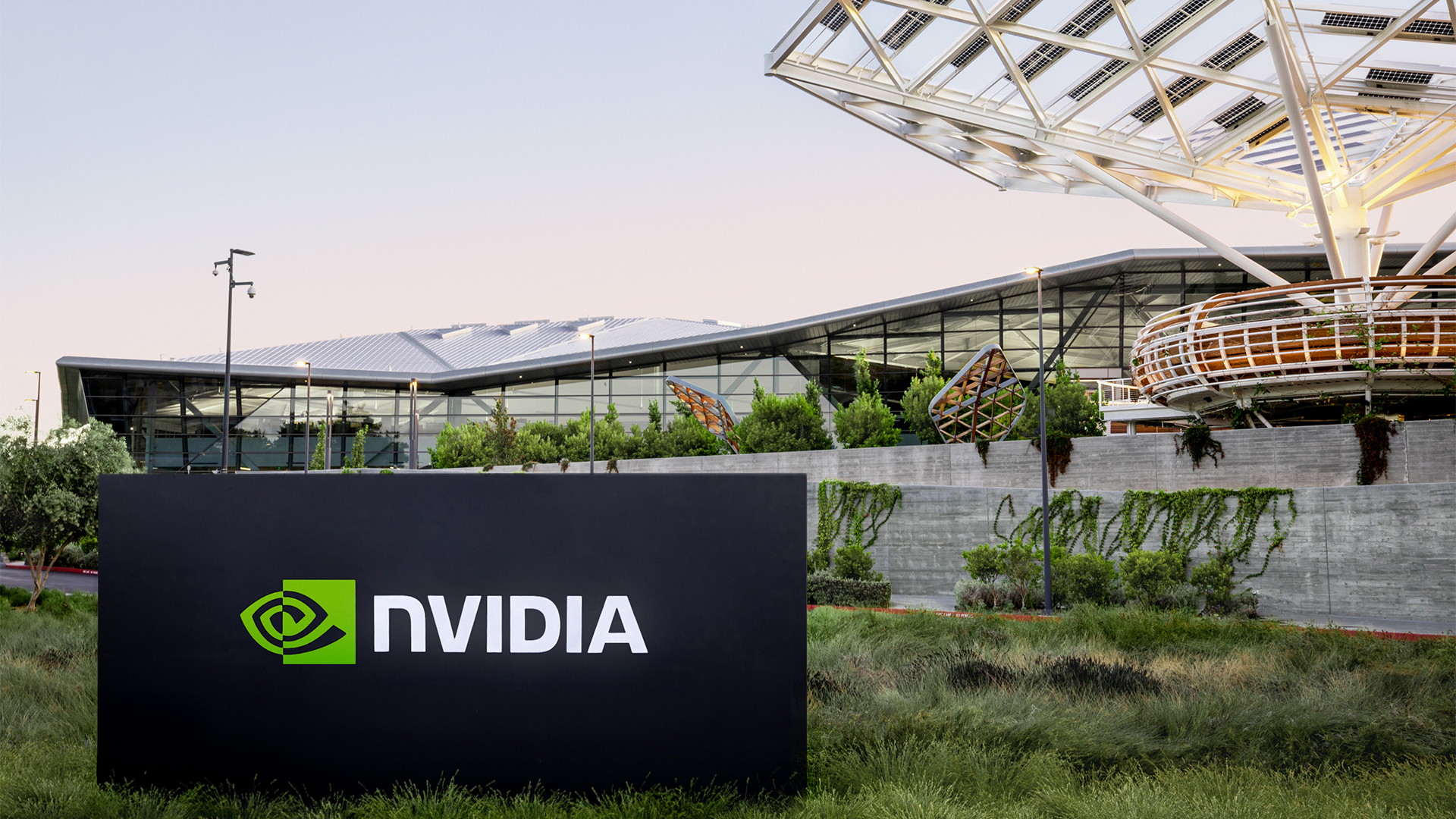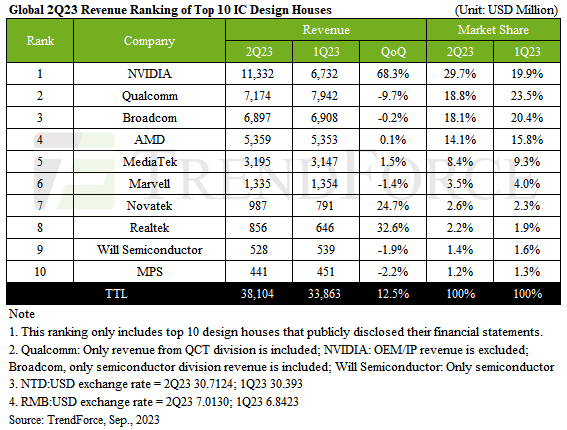Nvidia Surpasses Qualcomm as World’s Biggest Fabless Chip Designer
Nvidia's earnings in Q2 surpassed Qualcomm's revenue.

The world's leading chip design firms experienced a significant revenue boost because of the ongoing generative AI frenzy. They reached a collective $38.1 billion, a 12.5% rise from the previous quarter, according to TrendForce. Nvidia, which sold $10 billion worth of datacenter hardware emerged as the highest-earning fabless chip designer, overtaking Qualcomm in the rankings.
Nvidia capitalized on the global surge of artificial intelligence services based on large language models and saw its data center earnings soar by 105%. This growth was further fueled by the successful launch and shipment of their cutting-edge Hopper and Ampere architecture HGX systems. As a result, Nvidia's Q2 earnings reached a staggering $11.33 billion, marking a 68.3% increase quarter-over-quarter, TrendForce reports.
On the other hand, Qualcomm faced challenges in Q2. The Android smartphone market declined, which led to a dip in the company's revenue (although Apple's pre-purchases of modems helped a bit). Qualcomm reported Q2 earnings of approximately $7.17 billion, reflecting a 9.7% decline quarter-over-quarter.
Broadcom, another major player, ended the quarter with a revenue close to $6.9 billion, which was in line with its performance in the previous quarter. While the company did benefit from the AI-driven demand, particularly for high-end switches and routers, they also encountered challenges in sectors like server storage and broadband.
AMD, which is now a major supplier of server CPUs, reported a Q2 revenue of around $5.36 billion. The company's performance was impacted by a decrease in gaming GPU and embedded chips sales. Meanwhile, MediaTek experienced a revival, with its Q2 earnings climbing to a solid $3.2 billion, thanks to components like TV SoCs and Wi-Fi.
As the industry looks ahead to the third quarter, there's cautious optimism, according to TrendForce. While inventory levels seem promising, there's a noticeable dip in end-user demand. However, the increasing interest in AI and large language models from major companies suggests potential for continued growth, with projections hinting at another double-digit rise for the top IC design firms.
Get Tom's Hardware's best news and in-depth reviews, straight to your inbox.

Anton Shilov is a contributing writer at Tom’s Hardware. Over the past couple of decades, he has covered everything from CPUs and GPUs to supercomputers and from modern process technologies and latest fab tools to high-tech industry trends.
